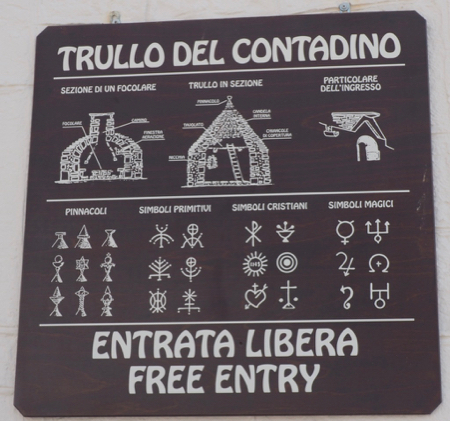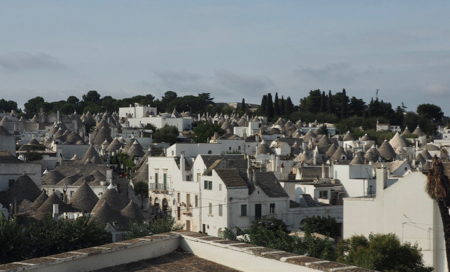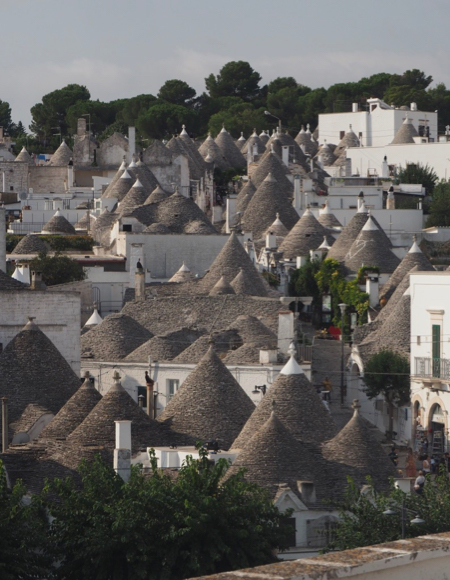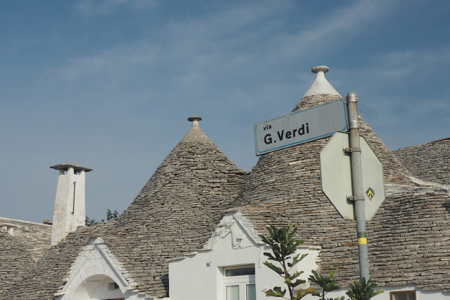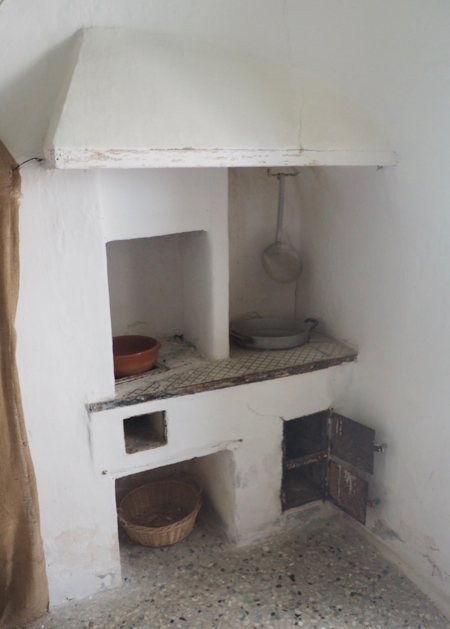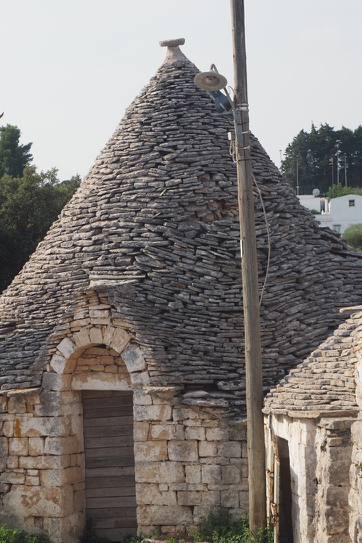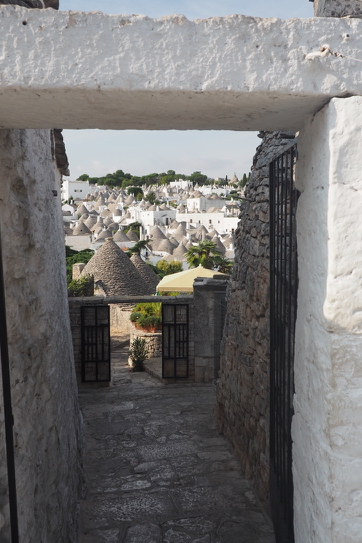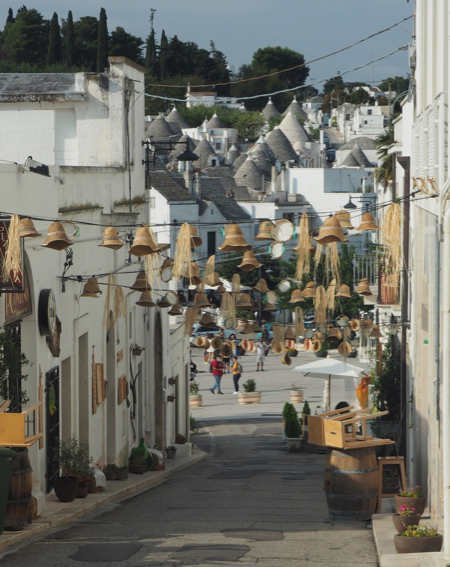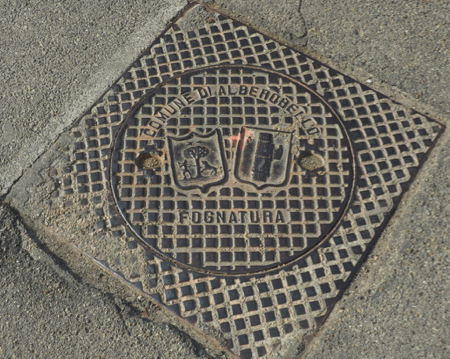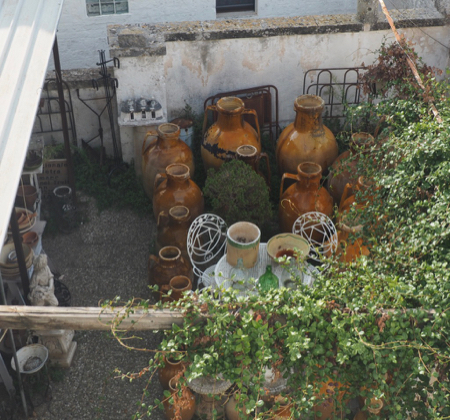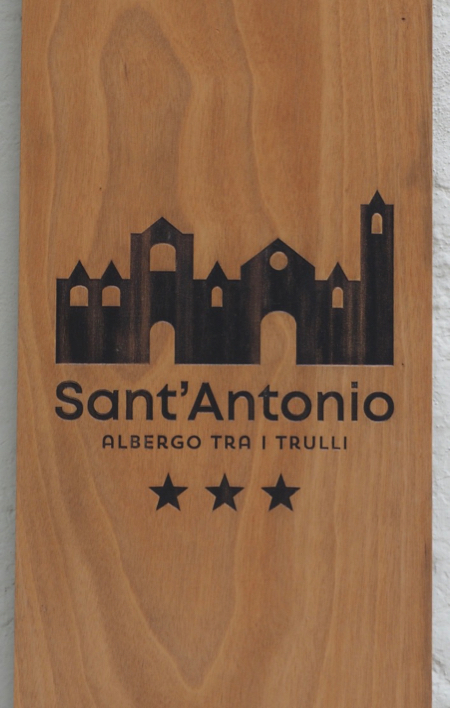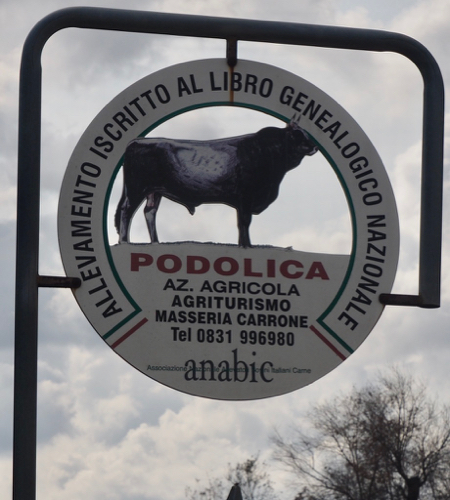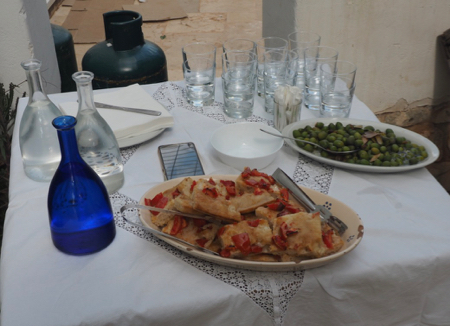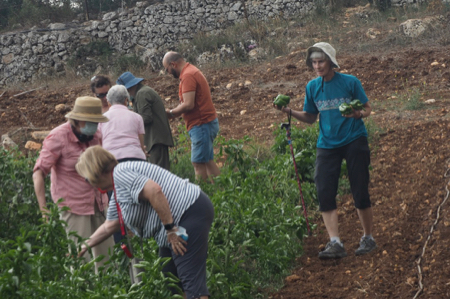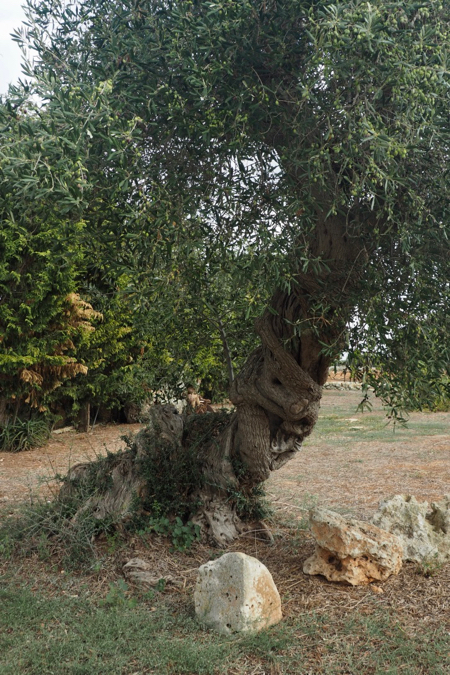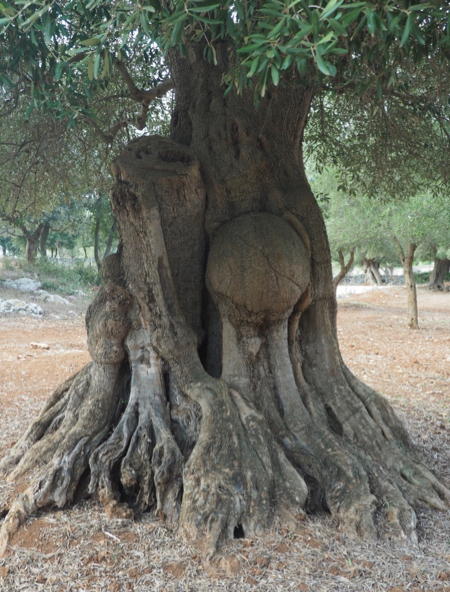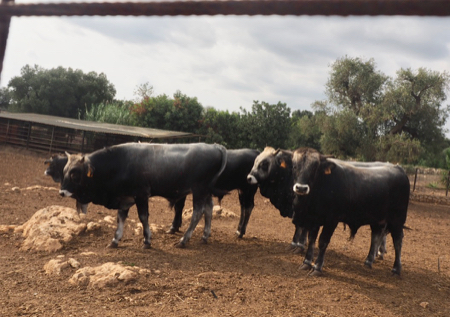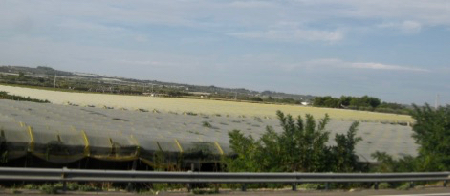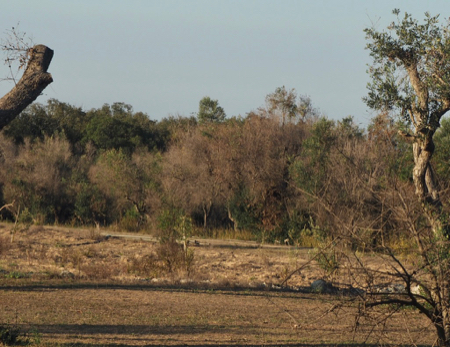Tues., 10/5 - Monopoli and Alberobello
Our bus was not able to enter the dock area of the port of Monopoli so we walked out beyond the gate to get on it to go to Alberobello (50 minutes). The trulli are the characteristic dwellings of the area. They are constructed from roughly worked limestone boulders collected from the neighboring fields. The roofs are pyramidal, domed or conical and are built up of corbelled limestone slabs. The trulli have been designated as a UNESCO Heritage Site.
We walked through a sample trulli. It had three rooms and three conical roofs. The walls were plastered and whitewashed. One room was a living room, one a bedroom, and one a kitchen with a wood stove and chimney. Some of these trulli are hundreds of years old and renovated into shops or B&Bs.
Information about the Trulli houses: construction and the symbols found on the roofs of many
Recognizing Italian composers
Kitchen area
Roof in need of repair
After a guided tour of the residential area, we were able to wander around the rest of the town. The old town was fascinating, like visiting a fairyland. Even the catholic church, St. Anthony, had a conical roof over the sanctuary and another over a chapel.
For our bathroom break we experienced our old friend - squat toilets, Turkish style - a hole in the floor. They are easier to sanitize - especially against COVID.
Street decoration
Alberobello manhole cover
Courtyard full of assorted pots and jars
Trulli with roof symbols
Conical roof of Saint Anthony's Catholic Church
Wine barrel
Signs and a machine in a laundromat we passed. Hopefully, people don't take this literally - kitty and doggie probably wouldn't be thrilled.
Lunch was at Masseria farm where the farmhouse is also a World Heritage site. Originally it was a dairy farm but when Italy joined the EU, they had to reduce the quantity of milk produced in this region and were forced to buy milk from Spain. This farm was depleted and they butchered their cows. It is now a B&B and restaurant and grows some vegetables, olives, peaches, and has some horses, cows and pigs. It is self-sustaining. Since this was our OAT “Life in the Day of” with COVID restrictions, we did not cook or make bread or cheese. The group harvested peppers, zucchini flowers, and string beans from the field garden and then we were served a nice Italian meal of peppers, bread, ear pasta, frittata with vegetables, and fruits - peaches, winter melon (white) and watermelon. The meal was accompanied with a nice light red wine and lots of olive oil that either they or their neighbors had made.
A tour to look at the bulls, cows, horses, and olive trees followed lunch and then we returned to our bus for the 50-minute ride back to the ship.
Agriturismo (agritourism) in Alberobello
Appetizers
Picking veggies for lunch
Lovely aubergines
Old olive tree
An even older olive tree
Some of Masseria's livestock
Covered plants - from the bus
Olive trees dying from Olive Quick Decline Syndrome (not yet at the Masseria Farm)
As soon as we returned to the ship, we had a lecture by a plant researcher about the devastating bacterial disease - called olive quick decline syndrome (OQDS)- that is killing the Puglia olive trees. Some of these trees were 1,000 years old, the oldest was 1600 years old. The disease is caused by the Xylella fastidious bacteria carried by a spittle beetle. The larva develop in the longitudinal cells (xylem - tubular conductive cells) and block the sap from running to the branches and thus the tree dies. Puglia has 60 million olive trees and 6 million have died since 2013.
To stop the spread of the disease, trees must be burned in the field and the field replanted with one of two disease resistant trees. Local farmers are very resistant to this type of mitigation and so the problem continues to spread northward. The Italian government and the EU are supplying the replacement trees but it will take 10 to 20 years to get back to the olive production before 2013.
Planned overnight in Monopoli.
| Return to Top | Return to Itinerary | Return to Trips page to view other trips | Return to Dreamcatcher Home Page |

